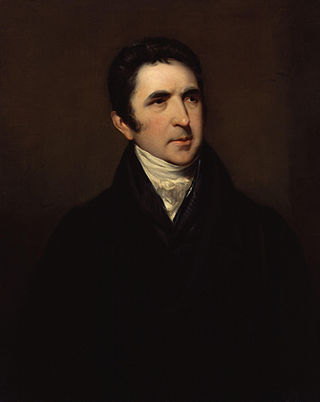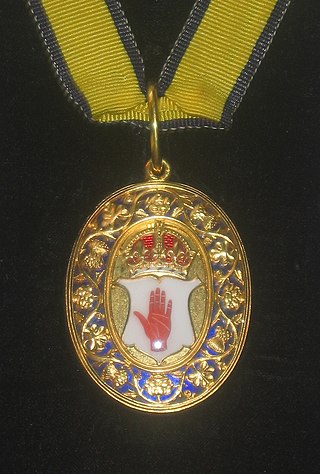
Viscount Hill, of Hawkstone and of Hardwicke in the County of Salop, is a title in the Peerage of the United Kingdom. It was created in 1842 for General Rowland Hill. He had already been created Baron Hill, of Almaraz and of Hawkstone in the County of Salop, in 1814, with remainder to the heirs male of his body, and Baron Hill, of Almarez and of Hawkestone and Hardwicke in the County of Salop, in 1816, with remainder to the heirs male of his elder brother John Hill. The viscountcy was created with the same special remainder. On the first Viscount's death in 1842, the barony of 1814 became extinct as he had no male issue, while he was succeeded in the barony of 1816 and the Viscountcy according to the special remainders by his nephew Sir Rowland Hill, 4th Baronet. His son, the 3rd Viscount, sat as a Conservative Member of Parliament for Shropshire North. In 1875, he assumed by Royal licence the additional surname of Clegg, which was that of his maternal grandfather. He inherited financial problems from his father which led to the breakup and sale of the family estates.
The Egerton, laterGrey Egerton, later stillEgerton baronetcy, of Egerton and Oulton in the county of Chester, is a title in the Baronetage of England held by the senior patrilineal branch of the Egerton family.
There have been two baronetcies created for people with the surname Jenkinson, both in the Baronetage of England. The seventh holder of the first creation was elevated to the peerage as Earl of Liverpool in 1796, a title which became extinct in 1851.
Sir Levinus Bennet, 2nd Baronet was a British Tory politician.
There have been two baronetcies created for persons with the surname Cave, one in the Baronetage of England and one in the Baronetage of the United Kingdom. Both creations are extant as of 2008.

There have been two baronetcies created for the Guise family, one in the Baronetage of England and one in the Baronetage of Great Britain. The latter creation is extant as of 2014.
Sir Charles Nicholas Mander, 4th Baronet is a British baronet, historian and businessman.

The Bazley Baronetcy, of Hatherop in the County of Gloucester, is a title in the Baronetage of the United Kingdom. It was created on 30 November 1869 for Thomas Bazley. He was a cotton spinner and also sat as Liberal Member of Parliament for Manchester from 1857 to 1880. He was succeeded by his son, the second Baronet. He was a justice of the peace, deputy lieutenant and high sheriff for Gloucestershire. On his death the title passed to his grandson, the third Baronet. As of 2007 the title is held by the latter's eldest son, the fourth Baronet, who succeeded in 1997.

There have been two baronetcies created for persons with the surname Barrow, one in the Baronetage of Great Britain and one in the Baronetage of the United Kingdom.

Flaxley Abbey is a former Cistercian monastery in England, now a Grade I listed manor and private residence, near the village of Flaxley in the Forest of Dean, Gloucestershire. It is the former seat of the Crawley-Boevey Baronets.

The Smith, later Bromley, later Pauncefote-Bromley, later Bromley-Wilson, later Bromley Baronetcy, of East Stoke in the County of Nottingham, is a title in the Baronetage of Great Britain. It was created on 31 October 1757 for the banker George Smith, High Sheriff of Nottinghamshire from 1757 to 1759. He was the eldest son of Abel Smith I (1686–1756) of Nottingham, the 2nd son of Thomas Smith I (1631–1699), the founder of Smith's Bank in Nottingham. His younger brothers included: Abel Smith II (1717–1788) and John Smith, ancestor of Julian Pauncefote, 1st Baron Pauncefote.

Sir William Courtenay, 1st Baronet was an English politician.

Catherina Boevey (1669–1726), was a philanthropist.
James Yonge (1794–1870) was for many years one of the chief physicians of the west of England.

Sir William Courtenay, 2nd Baronet of Powderham Castle, Powderham, Devon, was an English landowner, a leading member of the Devonshire gentry and Tory politician who sat in the English House of Commons from 1701 to 1707 and in the British House of Commons almost continually from 1707 to 1735.

James Boevey (1622–1696) was an English merchant, lawyer and philosopher of Huguenot parentage.

Sir Charles Barrow, 1st Baronet (1707–89), of Hygrove, Minsterworth, Gloucestershire, was an English politician.

William Hartley Carnegie was an Anglican priest and author. In addition to parish ministries and chaplaincy, he served as Archdeacon of Westminster from 1918 to 1919 and as sub-dean of Westminster Abbey from 1919 to 1936.
Arthur William Crawley-Boevey was a British author, barrister and civil servant, born on 12 August 1845 in London, UK. As an author, he is most known for his works on preservation of buildings and archeological sites in the British Empire including books on Flaxley Abbey. As a civil servant, he became the Acting Chief Presidency Magistrate of Bombay in 1887.
Sybella Mary Crawley-Boevey was a British author of Victorian fiction novels. They are mostly out of print.













